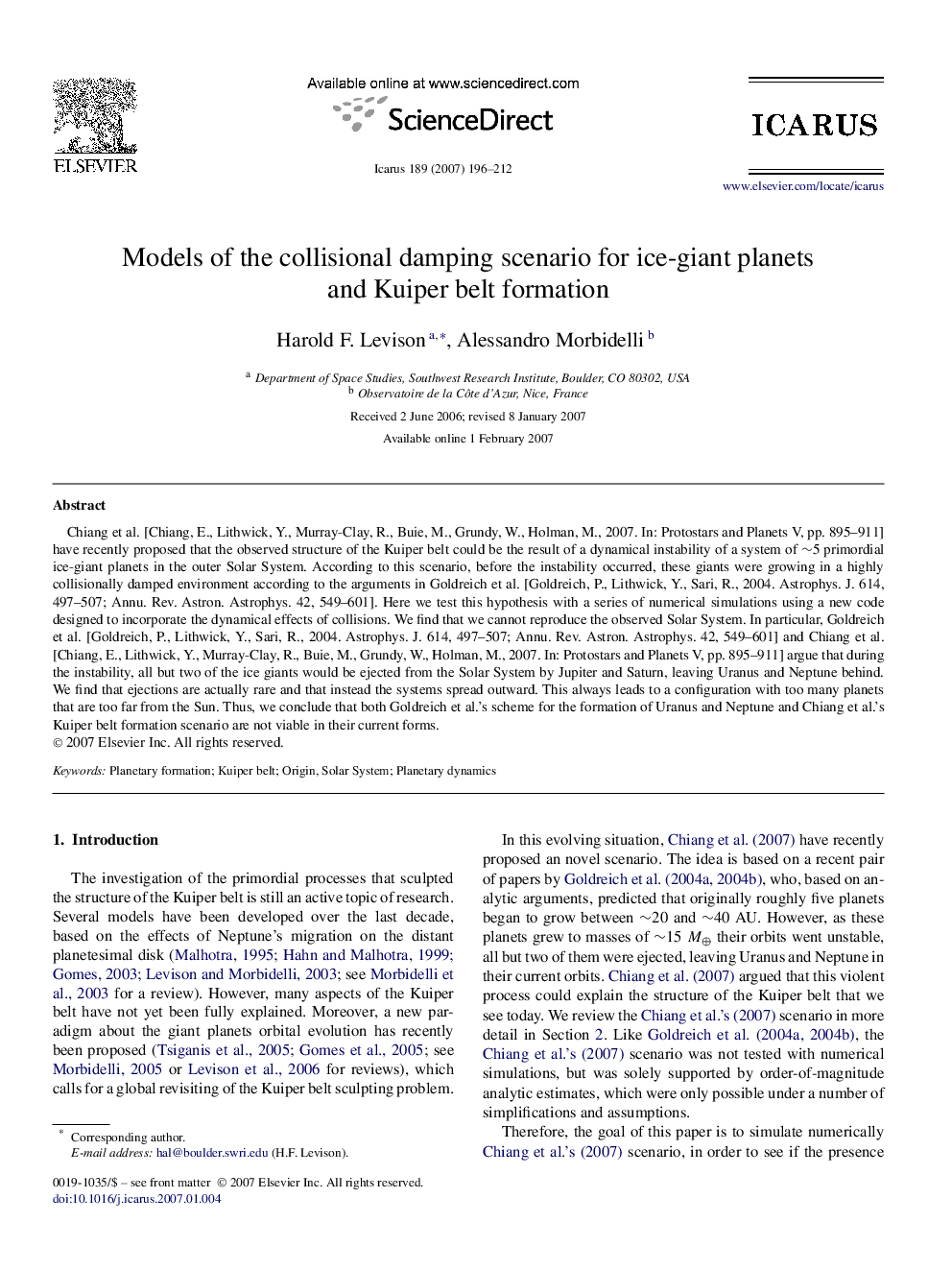| Article ID | Journal | Published Year | Pages | File Type |
|---|---|---|---|---|
| 1775572 | Icarus | 2007 | 17 Pages |
Chiang et al. [Chiang, E., Lithwick, Y., Murray-Clay, R., Buie, M., Grundy, W., Holman, M., 2007. In: Protostars and Planets V, pp. 895–911] have recently proposed that the observed structure of the Kuiper belt could be the result of a dynamical instability of a system of ∼5 primordial ice-giant planets in the outer Solar System. According to this scenario, before the instability occurred, these giants were growing in a highly collisionally damped environment according to the arguments in Goldreich et al. [Goldreich, P., Lithwick, Y., Sari, R., 2004. Astrophys. J. 614, 497–507; Annu. Rev. Astron. Astrophys. 42, 549–601]. Here we test this hypothesis with a series of numerical simulations using a new code designed to incorporate the dynamical effects of collisions. We find that we cannot reproduce the observed Solar System. In particular, Goldreich et al. [Goldreich, P., Lithwick, Y., Sari, R., 2004. Astrophys. J. 614, 497–507; Annu. Rev. Astron. Astrophys. 42, 549–601] and Chiang et al. [Chiang, E., Lithwick, Y., Murray-Clay, R., Buie, M., Grundy, W., Holman, M., 2007. In: Protostars and Planets V, pp. 895–911] argue that during the instability, all but two of the ice giants would be ejected from the Solar System by Jupiter and Saturn, leaving Uranus and Neptune behind. We find that ejections are actually rare and that instead the systems spread outward. This always leads to a configuration with too many planets that are too far from the Sun. Thus, we conclude that both Goldreich et al.'s scheme for the formation of Uranus and Neptune and Chiang et al.'s Kuiper belt formation scenario are not viable in their current forms.
